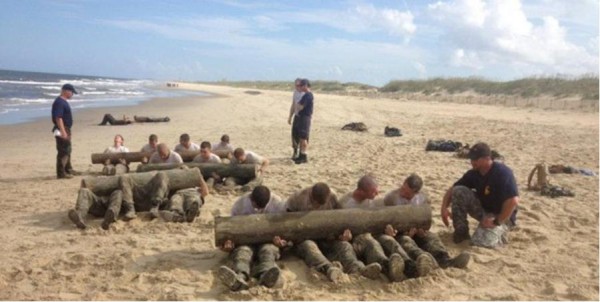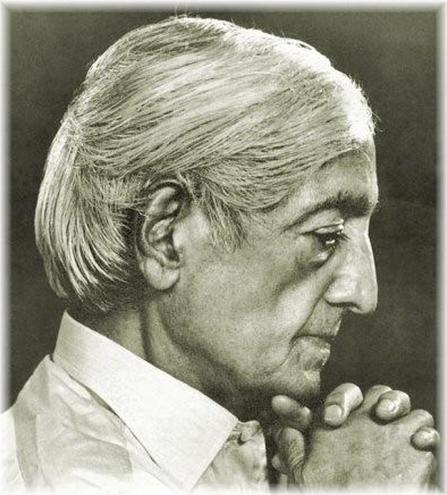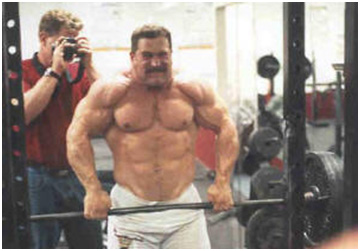 A military SUV is crawling along in 1st gear, barely moving through the sands of Coronado Beach. Inside the vehicle, an extremely muscular stone-faced man steers with one hand as he occasionally shouts through an electric bullhorn.
A military SUV is crawling along in 1st gear, barely moving through the sands of Coronado Beach. Inside the vehicle, an extremely muscular stone-faced man steers with one hand as he occasionally shouts through an electric bullhorn.
Another dour, athletic hard man sits in the passenger seat. These men are Navy SEAL instructors and this is Hell Week for elite military personnel seeking to become SEALs.
The SUV is driving parallel to a straggler, the very last man in a platoon of soldiers running along the beach. The soldier is panting and moving with the awkwardness of someone on the verge of complete physical collapse. He struggles and stumbles with his attempts to jog through the deep sand. His boots, socks, and pants are waterlogged, making him feel like he has 25-pound weights strapped to both legs. With each agonizing step, he sinks past his ankles in the deep sand.
Despite his exertion, the soldier is freezing—shivering as he runs. The sun is low and the endless seashore breeze is especially intense this chilly morning. The soldier is completely drenched with seawater, sweat, and covered with grimy sand. He’s been subjected to one brutal physical training drill after another since 4 AM.
He lifted rubber boats overhead then ran with them on extended arms. He did sit-ups with logs, and lifted logs overhead for reps. He capsized and almost drowned while paddling a rubber boat from the shore through crashing waves. He completed a two-mile ocean swim and has already run for three miles in the sand. He is parched, starving, freezing—and not yet halfway to the end of this drill. Now, he has fallen 200 yards behind the second slowest member of this elite platoon.
The SUV driver is lean like a whippet with sleeve tattoos, super short hair, a mustache and sleek black sunglasses. With a quick practiced movement, he rips the bullhorn from his lap. His voice cracks the silence like a gunshot as he aims the bullhorn at the running soldier.
“JENKINS! Give it UP! There is no disgrace in being a pussy. Embrace your inner pussy, Jenkins. Quit. There is no shame in quitting. 99% of those that come here quit, Jenkins. Just stop running, jump into the warm vehicle, and have some hot coffee. Chuck, do we have any hot coffee left for Jenkins?”
The hard man in the passenger seat has heard this same question routinely and responds like a robotic thespian. His deep bass voice is loud, practiced, and gruff—he’s an articulate brute.
“Plenty of hot java, Skip! Oh, and look Skip, it’s a whole Subway roast beef sub with extra meat and mayo!”
“Jenkins! We got coffee and Subway and heat!”
The soldier’s slow pace and labored breathing become even slower and more labored as he begins to envision sitting in the back seat of the black SUV. He can almost feel the heater blowing on his face and frozen hands. Maybe he could take off his shoes and socks, then put his wet, shredded, white wrinkled feet in front of a rear heater vent. That would be incredible! He could drink the scalding-hot black coffee between bites of submarine. It would be the most incredible coffee he’d ever had and the most incredible tasting sub he’d ever eaten.
The soldier tasted the imaginary roast beef sub in this elaborate food fantasy. “And you know,” he thought, “A roast beef sub will taste just as good cold. It’s not like a meatball sub, a meatball sub has to be hot. If I could have a hot sub, I would definitely get meatballs on that Italian bread, though meatballs on honey whole wheat bread would also be excellent with provolone and extra hot peppers…”
“JENKINS! QUIT DUDE! Jenkins!!!! Listen to the Little Man inside your head, Jenkins! The Little Man is saying it’s okay to quit—we’ve quit before and we’ll quit again—there is no shame in being a f$#!ing quitter!” LISTEN TO THE LITTLE MAN, JENKINS!”
Jenkins was blasted out of his blissful reverie. He’d been on another planet—an imaginary food fantasy planet, then a piercing 120-decibel bullhorn message from his tormentors snapped him back into Hell Week. Suddenly he was back on the beach, back in the reality of Hell Week. His legs were beyond leaden, and his breathing sounded like an overloaded steam locomotive heading up Pike’s Peak. He wanted to go back to his fantasy food world, but the gossamer strand leading to it was irreparably shattered. Now, the Little Man inside Jenkins’ head went to work, addressing his true inner self.
“What is so bad about quitting? Seriously, do you really think you can get through the rest of the day? They are going to keep this shit up late into the night. And this is only day three. Get real, you need to think about what I’m saying. There is no shame or disgrace in quitting.”
It was all so confusing to Jenkins.
The man in the SUV looked at his passenger and said, “I think we need to check this dude out. He looks ready to nosedive.” In cases where the trainers sense the trainee might be in real danger, usually due to hyperthermia, they will end the tryout—whether the trainee wants to continue or not. The driver shouted through the bullhorn again.
“Jenkins! Stop!”
Jenkins looked over at the stopped SUV. He wasn’t sure what he’d heard was real. The driver motioned him over to the vehicle. The passenger met the exhausted soldier and had him place a heart rate monitor around his chest. Jenkins was panting, sweating, and over-heated but shivering like racehorse ridden hard and put up wet.
“Where is he at?” the driver demanded of the passenger.
Chuck—the passenger—looked at the heart rate monitor, laughed mockingly and said, “121!”
The driver was incredulous. “WHAT! 121?! Oh, this figures… Jenkins, you really should get an Academy Award.”
A soldier who’d been subjected to the same drills and conditions while exhibiting Jenkins’ outward signs of exhaustion should have had a sky-high or abnormally low heart rate. Jenkins had neither. He had a moderately elevated heart rate, one easily achieved with 75% effort on a stationary bike. What is the significance of this physiological contradiction? Outward exhaustion with only moderate internal stimulation can be attributed to a mind/body asynchrony.
Jenkins was far from going into hyperthermia-induced shock, he was plodding along on dead limbs with a barely elevated heart rate. The SEAL instructors had seen this phenomenon before. When the mind and body are in conflict, a man who might be capable of passing BUDs won’t make the cut. When the mind and body are out of sync and at odds, performance deteriorates.
“I need you to end this, Jenkins. I need you to quit. This is just the beginning.”
Jenkins needed no further prodding. He sighed and said, “Roger that. I agree, sir. I quit.”
Both SEAL trainers breathed a sigh of relief. The real Jenkins breathed another sigh of relief, and the Little Man inside of Jenkins’ head who had made it all happen, clapped his little hands gleefully because he had retained control over Jenkins. But it had been a close call. Inside the warm SUV, there really was hot coffee and a Subway sub. Yet somehow Jenkins barely tasted the coffee and wasn’t hungry anymore.
The men who make it through BUDs have their minds and bodies in sync. At some point, a man has to silence the Little Man inside his head. Otherwise, the Little Man babbles on and on and on, expressing nagging suspicions, doubt, weakness, and always providing a continuous, ongoing commentary. The Little Man is an energy drain that shatters confidence while continuously expressing self-doubt. We need to shut that idiot up, but it’s not that easy.
At some point, a man has to realize he doesn’t need this idiot’s commentary or input. It’s just a massive drain and distraction. Besides, who is this Little Man and who elected him Pope? When a man realizes he has been debating with himself, the Little Man’s days are numbered.
Those who successfully silence the Little Man are freed to face excruciating challenges with a singular mind/body connection. There’s no guarantee that they’ll be able to rise to the challenge, but at least they will have their mental-physical synergy. They will be empowered to operate at 105% of their realistic capacity. Whether this amplified capacity is enough to make the grade is another question entirely.
The brain-train SEAL instructor says, “A consistent thinker is a thoughtless person, because he conforms to a pattern; he repeats phrases and thinks in a groove.”
Krishnamurti felt that the “cessation of thought was the awakening of intelligence.” No thought, no Little Man. Krishnamurti felt the same as the SEAL instructors about the Little Man inside our head. Krishnamurti was a sort of SEAL instructor for brain-training. He did not suffer fools gladly and posed the rhetorical question, “How do we dissolve the observer, the always-thinking, opinioned inner voice?” Krishnamurti held that as long as the “observer” was active and verbal, our perception of reality—which always takes place in the immediate present—was impossible.
Preoccupation precludes pure perception—the present is a fast-flowing, ever-changing river. Reality rips past like intense rapids, only the enlightened experience reality as a serene and placid lake. Someone engaged in an internal dialogue with an imaginary person (the thinker/observer) can’t simultaneously perceive reality. Reality occurs at a lightning-fast pace. The human brain is incapable of creating an internal, multi-tasking split screen for a simultaneous perception of reality along with a constant internal mental conversation.
Life is not a Reality TV show with you as the star. That’s a false mental construct, an elaborate ego trip. Creating elaborate mental fantasies interferes with the perception of reality. Preoccupied people only glimpse reality in the gaps and spaces between their ceaseless mental chattering. The Little Man creates the intoxicating illusion that he is real, then develops a persona that evolves and tries to dominate you over time.
Imagine a fantasy construct you’ve conjured out of thin air that takes on a life of its own then tries to convince you that he is real, a valuable companion, and a trusted advisor. Though he’s an incredible salesman, his argument is flawed because his universe is finite—limited to your own puny life experience. Since he is you, the Little Man’s advice is worthless. You already know anything he will say.
The rational world of the thinker is mechanical, slow, ponderous, speculative, limited, and decidedly inferior. The ideal mindset is Little Man-free: alert, vibrant, electrified, hypersensitive and not sleepy. This mindset is effortlessly, sublimely silent. It’s not an affected silence, a clever mind-trick, or the conscious mind feigning silence to retain control. We seek a mental silence that’s not imposed or pretend. We want the mind to fall silent because it’s completely engrossed with the task at hand—whatever that might be.
When completely absorbed, the mind falls silent of its own accord. We can “lose ourselves” in a myriad of activities. Someone can “become one” while building an intricate ship-in-a-bottle, or while playing an instrument. They can lose themselves quilting, painting, bowling, playing golf, performing a martial art, or cooking. The thinker falls silent during a peak athletic experience, fly fishing, or surfing. Experiences that can engage us to the point of immersion and oneness are infinite, but uniformly identified by the same effortless silence and concentration. When we are mentally silent, it’s easy to become totally focused and absorbed by the task at hand.
Krishnamurti would claim that while a state of electric quietude is the desired default psychological status, this doesn’t mean we shouldn’t use our left-brained, right-handed, rational side when those unique skills are appropriate. Optimally, every day, we should successfully modulate between both hemispheres of the brain. While one half is in use, the other is resting. By resting our mind one half at a time, we avoid the overheated, un-rested, stressed-out mindset so common today.
How do we attain or access this “effortless silent zone,” without the conscious mind turning it into another clever construction? How do we take the steering wheel away from the fictitious Little Man?
We can’t think our way into mental silence. That would be just another conscious act of will. Willpower is the conscious mind’s ability to force the body to do what it commands. Willpower can be used to impose mental silence, but that type of silence does not cause the transcendental loss of self. The observer will strain so hard to ensure his own silence that the perception of reality—the requisite precursor of transcendent performance—will be impossible.
Willpower is a mental construct, it’s G. Gordon Liddy holding his hand over a cigarette lighter until his flesh burns to impress a dinner date. By definition, every act of willpower is finite. Acts of will must come to an end. A man can only grit his teeth for so long, stick to a diet he hates for so long, or do something he abhors for so long.
The human brain is like any other muscle—it can be “overtrained.” Similar to external muscles which can be harmed by overtraining, a consciousness continually engaged in intense and prolonged internal dialogue, debate, and amplification of real and perceived stresses, can become overheated. An overheated brain is the equivalent of an overtrained muscle.
The solution to a stressed-out overheated, un-rested brain is finding the electric silence associated with tasks that require intuitive creativity. Unlike willpower, which is finite, intuitive creativity is infinite. It runs on solar power or cold-fusion. It’s frictionless and self-regenerating. Once we’re able to access a consistent state of the present, Krishnamurti says we glimpse the consciousness we were intended to have. This is the primal consciousness we lost somewhere along the evolutionary pathway. Zen masters speak of it as “reacquiring Original Mind or Original Nature.”
Elite athletes have peak athletic experiences on a regular basis—that’s a big part of being elite. The super athlete can sync the mind and body by wordlessly psyching themselves up. The athletic elite know that a focused and psyched-up mind improves the quality of individual workouts, causing hypertrophy while mobilizing and oxidizing stored body fat. All physical transformations begin in the mind of the trainee. Nothing fuels enthusiasm like tangible results. When the focused, silent mind is combined with an effective training protocol and a logical nutritional compliment, physical synergy occurs. When this state-of-being takes hold, results will exceed any and all realistic expectations.
Transformative training is addictive. The athlete craves to repeat these peak episodes of super human effort. Elite athletes purposefully subject themselves to brutal training for protracted periods. When body and mind are in sync, the resulting performance produces results. When in “the Zone” we can perform “over our heads”, setting new standards and personal records in every measurable benchmark. The elite athlete will develop an uncanny ability to routinely access a mental zone that significantly improves workout performance.
“Intuition is the rapid, subconscious crosschecking that occurs when the ordinary mind doesn’t intervene.”
-Neil Claremont
Who is running the show when we are at our best? Is the conscious mind—the thinker, observer, the Little Man—responsible for our actions during the rapid-fire action of full-speed, high-level athletics? For example, how can someone mindlessly play third base—reacting fast enough with spontaneous precision to catch a five inch ball traveling at 100 miles an hour?
Does the Little Man supervise our actions as the batter makes contact with the baseball? Once the ball is hit, in less than a second, it will be in the field. The thinking mind doesn’t have time to supervise and say, “Okay, now let’s move eleven feet left on a northeast heading of 163 degrees. No, wait! The baseball just hit a depression on its first hop and bounced, we need a tangential course correction. The new interception point requires you to travel three feet southeast on a 47-degree course. Please begin to open your glove and lower it to a point six inches off the ground.”
Meanwhile the baseball will have flown by three seconds ago like it was shot out of a rifle.
So, who is driving? Who exactly is in charge, guiding the human body to intercept an object traveling over 100 miles per hour and liable to bounce in any direction at the last possible second? In baseball, an experienced 3rd baseman will make this catch nine times out of ten with mindless, practiced ease.
What guides us to move and adjust to return a 150-mph racquetball serve? Who makes all the trajectory and velocity calculations that allow a pro to shoot a basketball through a hoop from forty feet away twenty times in a row without missing? I want to get to know this deaf-mute consciousness that guides and improves my athletic performance.
I know it sure isn’t the Little Man.
We can only access the intuitive, creative state that enables the elite to achieve a transcendental level of performance when we surrender our control to the subconscious, letting it wordlessly guide body, mind and spirit. We do our best work when we apply undivided attention to what is happening—not what is about to happen or what has happened—those are artificial sparkly objects designed to distract us. What’s about to happen is a projection of the future, and what has happened is a reflection of the past. Both are constructs of the Little Man. What is happening should be our primary concern.
Right now, it’s very probable that the Little Man inside your head is saying, “Well that was a stupid-ass blog post. How ridiculous!”
***
Marty Gallagher, author of The Purposeful Primitive, is an underground legend. Mentored by a Hall-of-Fame strength athlete as a teenager, Marty set his first national record in 1967 as a 17-year old Olympic weightlifter; he set his most recent national record in 2013 as a 63-year old powerlifter. He is a former world powerlifting champion who turned his attention to coaching athletes and devising individualized training templates for the finest strength athletes in the world. Read more about Marty here.


